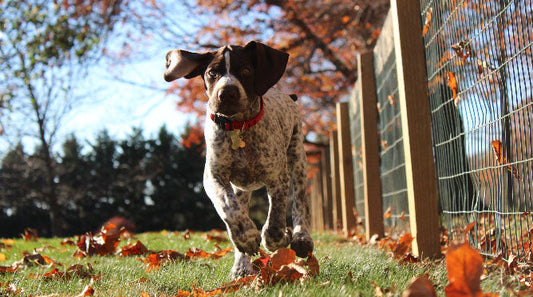From facial grimacing to whimpering and outright wailing, humans show pain in a multitude of ways. Dogs do too. And just like some people often hide their pain. How Do I Know if My Dog is in Pain?
Fortunately, humans can put into words the what and where of their pain. Dogs cannot, so it’s a pet parent’s job to watch for subtle and not so subtle signs that might indicate your dog is in pain. Especially if he is the “walk it off” type of pup.
With Covid-19 lockdowns resulting in people spending a lot more time with their dogs, it’s easier to tune into their pets’ emotions. Here are six of the most common ways your dog lets you know he’s in pain, even if he’s stoic about it.
What Causes Pain in Dogs?
Dogs, like humans, suffer from both acute (from an injury) and chronic pain, which is often the result of things like arthritis or dental problems. Anything that damages cells and/or creates inflammation can cause pain in dogs.
1. Excessive Vocalizations
Although it can be distressing to hear, your pet’s vocalization of his pain makes it easier for you to know something’s wrong. But unless there’s a physical action paired with the vocalization, it can be tough to tell what’s going on. Unusual or more frequent whining, whimpering, growling, snarling, and even howling should all be regarded as signs of underlying pain.
2. Constant Grooming
Self-grooming is a normal and natural behavior for your pet, but if it’s excessive or compulsive, it might be a sign he’s in pain. Because dogs often lick and groom where it hurts—even if the pain is internal—watch for obsessive licking of a specific area of his body.
3. Changes in Body and Posture
If you notice swelling in your dog’s legs, paws, or face, it’s a possible sign of inflammation, infection, or even cancer. Some dogs adopt a rigid and hunched stance with this type of pain. Others display a prayer-like posture where their front legs are on the ground and their hind quarters are in the air. This particular posture is common in dogs suffering from abdominal pain.
4. Aggression
A sudden change in your pet’s disposition, including more aggressive behavior, can indicate pain. This is easier to spot in dogs that are typically more docile. If your pet begins acting in a more hostile manner, take extra care when checking him out for injuries.
5. Changes in Normal Habits
A noticeable difference in your pup’s eating, drinking, or sleeping habits can also indicate pain.
- Dogs in pain tend to sleep more.
- A loss of appetite can indicate abdominal or intestinal problems. Difficulty eating is often a sign of dental problems.
- Excessive or less frequent water drinking is a common pain signal.
6. Limping
Whether it’s from a sore paw, arthritic pain, or an injury, if your dog is limping it’s a sure sign something is hurting him. Mobility issues often require medical attention. A limp that doesn’t resolve in a day or two should be looked into.
How to Help if Your Dog’s in Pain
Of course, many of these symptoms can mean something other than pain. But if you find or notice something that worries you, or your pet starts exhibiting out of the ordinary behaviors, a call to the vet is likely in order.





